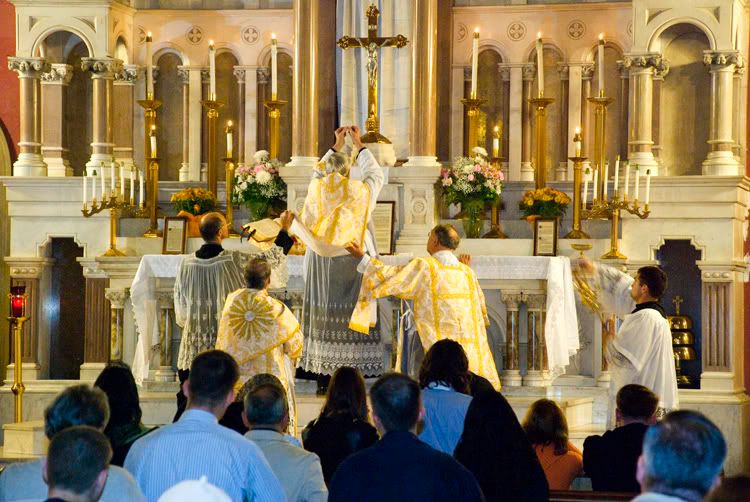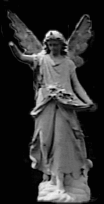Christmas Traditions Continued

Christmas Eve
Christians may derive the Christmas Eve tradition from Jewish holidays, which extend from sundown to sundown. Christmas Eve services are often a Candlelight Service, when at some time the only lighting is provided by candles placed around the sanctuary and ones held by worshippers. The service often includes a retelling of the Christmas Story and singing of several favorite Christmas hymns. Some churches hold a midnight service -- one that ends at midnight as the day celebrating Christ's birth is ushered in.
Many families have Christmas Eve traditions too. Some have a complete ritual that is followed lights turned off except for Christmas tree lights, eating certain foods, opening of one gift, and so on.

Christmas Rose
The Rose of Sharon is the common name for one of two unrelated plants. One plant is Aaron's beard, or goldflower (Saint-John's-Wort). The other is the althaea. But the biblical rose of Sharon, made famous in the Song of Solomon, has actually not been identified. Some botanists think it's a species of narcissus; others think it's the autumn crocus.

Christmas stockings
According to an old tradition, three poor girls who needed the money for their wedding dowries had hung their stockings by the fire to dry. The original Saint Nicholas found out their need and left his very first gifts of gold coins in their stockings.
For a long time, it was traditional to receive small items like fruit, nuts and candy in your stocking. But since the 1950s, many homes have seen more expensive gifts replacing the simple ones.
The tradition of a lump of coal in the stockings of naughty children comes from Italy.

Christmas trees
At a time of the year when the leaves of other types of trees have browned and fallen off, evergreens keep their fresh, green look. They are a symbol for life.
Dr. Martin Luther was one of the first to use the Christmas tree as a home decoration. Tradition holds that while on a walk one Christmas Eve, Dr. Luther noticed an evergreen tree shining in the moonlight. He couldn't forget this beautiful picture. He returned home with an evergreen tree and decorated it with candles. Luther told his children that the tree should remind them of the brightness of Christmas and its message of the Savior's birth.
By the beginning of the 19th century, all of Germany had adopted the use of the green "Christmas" tree. They added stars, sweetmeats, tiny toys, and gilded nuts together with candles on the trees.
The custom spread to England in the 19th century during the reign of Queen Victoria, who was married to the German Prince Albert. He wanted to have his children enjoy one of his childhood memories. The custom of a Christmas Tree soon spread throughout Europe and was brought to the United States by Pennsylvania Germans in the 1820's. Queen Victoria had a Christmas Tree placed in Windsor Castle in 1841.
Dr. Henry Schwan introduced the custom of a lighted Christmas tree in church, in Zion Lutheran Church in Cleveland Ohio, Christmas Eve 1851.
In Germany and in ancient northern cultures, after the December festivities, the branches were removed and the trunk was decorated on May 1st as a May Pole, celebrating a rebirth of spring. The tree was then cut up and the largest log was used the next December as the Yule Log..
Christmas tree ornaments
The Star. Christ is the star that all wise people follow, as did wise men of old.
For ancient people, a five-pointed star at the top of a tree symbolized the pentagram -- the so-called "star of mankind". But for Christians, a five pointed star represents the star followed by the Magi.
An eight pointed star is a symbol of the world Christ came to save.
The six pointed star, called the Creator's star, represents the six days of creation. Often r
 ecognized as the Jewish "Star of David", it also reminds us of Jesus' ancestor, King David.
ecognized as the Jewish "Star of David", it also reminds us of Jesus' ancestor, King David.Ornaments.
The common Christmas season colors of red and green originated with the red apples that once hung on the green Paradeisbaum, or Paradise Tree, which was part of 14th century religious pageantry. Most decorations we hang on trees today have a long history and once had very specific religious associations.
Gilded nuts and gingerbread cookies were hidden in the tree. Marzipan candies, shaped like fruits and vegetables, were hung from the boughs. Brightly decorated eggshells, cut in half and filled with tiny candies, were set in the tree like bird nests. So many sweets were hung from the tree that some people called it "the sugar tree". On the Twelfth Night of Christmas, January 5th, when it was believed that the Magi arrived in Bethlehem bearing gifts, the tree was shaken and the children finally were allowed to eat the sweets that fell from the tree.
The wafers once hung on the Paradise tree were replaced with cookies in the form of hearts, bells, angels and stars. With time, maybe because many decorations were eaten before the tree was taken down, decorations made out of thin, painted metal replaced the cookies.
The type of Christmas tree decorations we use today started when families in colder climates combined the decorations of the Paradise Tree with the candles that were used on conifer trees. Even today some people decorate the Christmas tree with strings of popcorn or hang cookies on some branches.
In 1880, Woolworth's department store was first to put manufactured Christmas tree ornaments on sale. They were immediately popular.
Lights. Martin Luther, in the 16th century, is credited as being the first person to put candles on a tree. The first electrically lighted Christmas tree appeared in 1882.
Albert Sadacca was only fifteen, when in 1917 a tragic fire in New York City involving Christmas tree candles inspired him to invent electric Christmas lights. The Sadacca family sold ornamental novelty items including novelty lights. Albert adapted some of the products into safe electric lights for Christmas trees. The first year only one hundred strings of white lights sold. The second year Sadacca used brightly colored bulbs and a booming multi-million-dollar business was born.
In 1923 Calvin Coolidge held the first lighting of an outdoor Christmas tree at the White House, thereby starting a long tradition.
 SACRED HEART CHURCH NEW HAVEN, CONNECTICUT
SACRED HEART CHURCH NEW HAVEN, CONNECTICUT













 Official Mascot of The League of Warm & Fuzzy Traditionalists
Official Mascot of The League of Warm & Fuzzy Traditionalists







0 Comments:
Post a Comment
<< Home